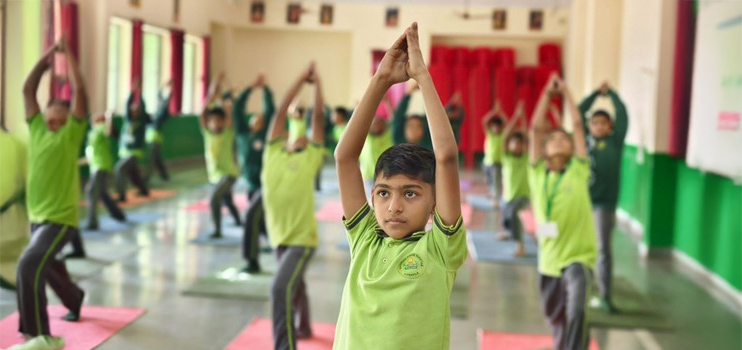Can Yoga Help Students Learn Better?
“Begin in a comfortable, seated position. Inhale… exhale… Feel your body.”
These instructions, common in yoga practice, might sound like a stretch in a school corridor filled with children moving around like a group of buzzing bees. But increasingly, research educators, and even students are recognizing that a moment of stillness may be just what the classrooms need.
Ask any schoolteacher and they’ll tell you how managing a horde of children can sometimes feel like juggling firecrackers. Attention spans are short, energy is super high, and emotional regulation is still a developing skill. Yoga’s special trick is to elude these by inviting the children to shut up, get on the mat, and follow the flow.
A calming influence

More than physical flexibility, yoga aids better balance, breath, and awareness which is often missing in today’s timely-tabled world. Research across the country, including the ones at Kaivalyadhama, one of the oldest yoga research institutes, have found that yoga can help restore them.
Studies conducted across residential schools in India show that yoga practice can enhance mental ability, cognitive performance, physical fitness, and even enables better absorption of nutrients in children.
In one urban school study, after 12 weeks of daily morning yoga, children showed marked improvement in mental abilities like logic, spatial understanding, and verbal reasoning. In rural schools, yoga helped boost absorption of magnesium and copper in children without dietary changes. Improvements were especially notable in their memory, attention, and emotional regulation.
Yoga is also promising in helping children with behavioral issues like ADHD or Attention-Deficit/Hyperactivity Disorder who often struggle with staying seated, following instructions, or holding a pencil. One study recorded sharp dips in inattention and hyperactivity after yogic interventions. Moreover, girls in rural areas saw especially benefits in physical activity and emotional well-being.
These studies, led by the Kaivalyadhama Health and Yoga Research Centre and other institutions, confirm that yoga is a cost-effective, accessible intervention for improving school performance and holistic health in children. It is a practical tool that schools can consider adding 15-30 minutes of it in the daily school curriculum for student health.
As one early childhood educator put it:
“I’ve seen many benefits of yoga in terms of balance, strength and manipulation… I thought it would be very helpful for these children.”
In fact, according to studies, school-based yoga programs led to improvements in motor coordination, emotional stability, and academic performance. One of their papers, published in The International Journal of Yoga, notes significant decreases in stress markers and behavioral issues among school-aged children after just a few weeks of regular yoga sessions.
A 2019 study in The Yogic Journal compared the academic performance of students who practiced yoga to those who didn’t. The yoga group not only reported lower stress levels but also showed improved scores in subjects that required focus and memory. And these aren’t just subjective feelings, researchers used measurable markers like cortisol levels (your body’s main stress hormones) and test results.
Kaivalyadhama’s research on rural residential school children found that yoga asanas like the Ekpaduttanpadasana (Single leg raise pose), ardha halasana (half plough pose), ardha pavanmuktasana (half wind release pose improve micronutrient absorption by enhancing digestive function. These asanas massage internal digestive organs, optimizing nutrient absorption while supporting the integrated functioning of digestive, respiratory, circulatory, nervous, endocrine, and excretory systems.
More than physical education

It’s easy to assume yoga belongs in a PE class, right next to kho-kho and sit-ups. It’s a threefold support system: physical, mental, and emotional. Teachers have reported that even a 10-minute guided breathing session before lessons helps students settle down, improve listening skills, and reduce impulsive behavior.
Plus, it requires no budget, no expensive equipment, and no major curriculum overhaul. Mats, if available, are helpful but not mandatory. A quiet corner and a willing teacher are enough to begin.
Some of the most convincing evidence doesn’t come from lab reports, but from lived experiences.
Read here to see how Kaivalya Vidya Niketan incorporates yogic principles.

~ Written by Tasmia Ansari
Tasmia Ansari is a journalist and writer based in India, reporting for the past five years at the intersection of technology, food, and climate

